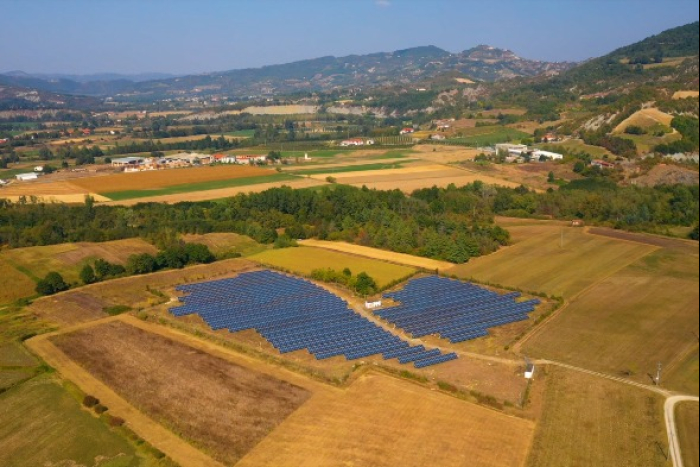Infrastructure
Infrastructure secondaries continue to rise amid inflation: Stafford
The assets are sold at a 10-15% discount; LP-led deals will reach $13.5 billion with supply-demand balance recovery
By Apr 09, 2024 (Gmt+09:00)
4
Min read
Most Read
LG Chem to sell water filter business to Glenwood PE for $692 million


KT&G eyes overseas M&A after rejecting activist fund's offer


Mirae Asset to be named Korea Post’s core real estate fund operator


StockX in merger talks with Naver’s online reseller Kream


Meritz backs half of ex-manager’s $210 mn hedge fund



In last year's high-rate environment, investors flooded into the infrastructure market and secondary transactions in the inflation-hedging asset class surged 51.9% on-year to reach $11.7 billion, according to private market research firm Preqin.
The dealflow of limited partners-led infrastructure secondaries is forecast to reach $13.5 billion this year, with a 10-15% discount due to the supply-demand imbalance, Stafford Infrastructure’s Managing Partner William Greene told The Korea Economic Daily during his visit to Seoul in March.
Founded in 2000, the firm is the infrastructure arm of London-headquartered Stafford Capital Partners which has $8.5 billion in funds under management as of the end of 2023. Stafford Infrastructure aims to raise Korean institutional investors’ commitment from the current 7% of their funds to 12% this year.
The infrastructure firm manages timberland, renewables, data centers, transportation and others primarily in Australia, Europe and North America, focusing on low-risk secondary assets that provide 7-8% net returns on the primary market. It has achieved higher net returns through secondaries to date, by investing mostly via 10-year commingled funds and holding the mature assets for seven to eight years on average, said Greene.
He noted that last year’s secondaries boom was driven by valuation decreases in fixed-income markets which generated strong denominator effects and increased disposals of alternative assets. The supply-demand of the secondaries will recover equilibrium by the end of this year with expected rate cuts, he added.
“In the middle of 2023, some 18% of investors were considering cutting their exposure to infrastructure secondaries over the upcoming 12 months, according to Preqin’s data. The figure declined to 16% as of early 2024 and will further drop towards 10%, the average in previous years,” Greene said.

While many investors are flocking to energy transition and digital infrastructure, Stafford takes a careful approach to the valuation of the two emerging sectors.
Greene noted that investors tend to pay more and take higher risks in these fast-growing sectors and secondary investing can be a great strategy for those assets.
“Investors are moving from renewables with guaranteed cashflow to higher risk projects such as offshore wind farms. In the data center sector, the earnings before interest, taxes, depreciation and amortization (EBITDA) multiples reach nearly 30 times,” he said.
“To justify the high valuation, investors seek more acquisitions. At this point, secondary investing in those assets is advantageous as they are held at a more reasonable valuation than in the primary market and are sold at a higher price,” he added.
The investment firm aims for the world’s largest timberland secondaries vehicle with a more than $1 billion target via its 10th forestry fund, The Stafford International Timberland Fund X. Planted forests account for 7% of the world’s forests but supply 46% of lumber, according to Stafford.
Demand for timberland was stable during the pandemic, thanks to robust consumption of paper boxes for e-commerce deliveries, home renovations and diapers for aged populations, Greene said.
The firm is also raising capital for The Stafford Infrastructure Secondaries Fund V with a target size of €1.3 billion ($1.4 billion). The core plus fund aims to have 25% exposure to energy transition and zero to oil and gas in a push of its environment, social and governance efforts.
“We have found that reducing exposure to oil and gas is important from a risk management perspective, not only for ESG standards. There are increased risks of stranded assets in oil and gas as exiting prices in those sectors are decreasing while exiting prices in energy transition are rising,” Greene said.
Korean institutions are very sophisticated investors with a deep understanding and experience in the secondaries market, Greene said.
“Unlike some investors in developed countries, Korean limited partners view the primaries and secondaries for an asset as different strategies. This aligns with our philosophy of low risk with diversification, and we look to expand strong partnerships with Korean LPs.”
Write to Jihyun Kim at snowy@hankyung.com
Jennifer Nicholson-Breen edited this article.
More to Read
-
 Asset Owners ReportPrivate debt, infrastructure remain top picks for Korean LPs in 2024
Asset Owners ReportPrivate debt, infrastructure remain top picks for Korean LPs in 2024Jan 29, 2024 (Gmt+09:00)
6 Min read -
 InfrastructureDigital assets emerge as Korean LPs' No. 1 infrastructure target
InfrastructureDigital assets emerge as Korean LPs' No. 1 infrastructure targetJan 31, 2024 (Gmt+09:00)
4 Min read -
 ASK 2023Digital infrastructure as essential as water today: asset managers
ASK 2023Digital infrastructure as essential as water today: asset managersOct 27, 2023 (Gmt+09:00)
2 Min read -
 Asset managementMarket volatility creates opportunities for secondary buyers: Stafford
Asset managementMarket volatility creates opportunities for secondary buyers: StaffordNov 28, 2022 (Gmt+09:00)
7 Min read
Comment 0
LOG IN


